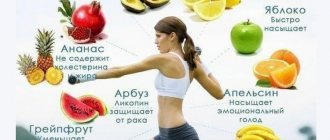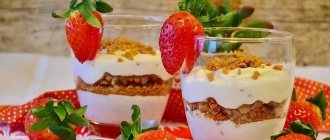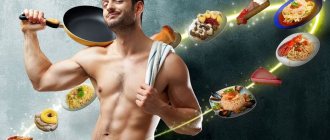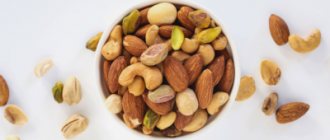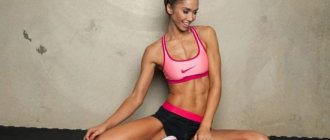Extra pounds are a universal universal pain for those who have ever thought about a healthy lifestyle, beauty, lightness, and longevity. How much effort and effort have to be spent to get rid of them. Especially ahead of the summer season. The beach dress code, without any concessions, will demonstrate who spent the winter and how. And queues line up for gym memberships, personal teachers are assigned, offering exercises, loads, indicating what to eat after a workout to lose weight, guaranteeing that when doing so, they will correct their sagging waist and normalize their plump sides.
Let's figure out how to approach the process correctly so that there is movement forward, and not marking time or, which is completely unsuitable, rolling back.
Athletes have special needs
Nutrient timing makes sense if:
- You are training for endurance. You participate in high-level competitions, running many kilometers every week at high intensity. Then during training you can drink drinks with added proteins and carbohydrates (P + C).
- You are a bodybuilder. You lift heavy weights and work to increase muscle mass, you want to gain weight. Sports drinks will also help.
- You are preparing for a fitness competition. You train for hours on end. You want your body fat percentage to be able to be written down in one number. To achieve this goal, branched chain amino acids (BCAAs) help stimulate and maintain muscle fibers.
Diet not for athletes
If:
- you exercise to improve your overall health and fitness;
- you do not have far-reaching goals;
- you have no special physiological needs;
...then you don't need a special nutrition strategy. It cannot be said that the regime is good or bad. It's just a tool that you need to know how to use.
The regime is not needed by office workers who have never exercised and have brought themselves to a pre-diabetic state, but it is needed by professionals.
In fact, only athletes can benefit from a strict nutrient schedule. The regime is not a magic wand; it will not have an immediate effect on your well-being and appearance. Especially if you only stick to it occasionally.
First, let's figure out what happens in the body before, during and after training, and then we'll find out what you need to eat to get the maximum in each case.
Before training
Three hours before exercise, you should eat something that will help:
- stock up on energy;
- increase activity;
- protect against dehydration;
- maintain muscle mass;
- recover quickly.
Protein eaten before exercise helps maintain or increase muscle size, prevent too much muscle damage, and flood the bloodstream with amino acids at a time when the body needs them most. It is important for everyone who improves their health along with their body proportions.
While you haven’t rushed to make a protein shake yet: protein before a workout is important, but the speed of its digestion does not have such a strong effect on the result. So any protein product eaten a few hours before training will lead to the same effect.
Carbohydrates provide fuel for long hours of training and speed up recovery after intense exercise and stimulate insulin production. They also store glycogen in the muscles and liver, thanks to which the brain receives signals of satiety, so that the body can calmly spend energy on muscle growth.
The effect of fat on the quality of the upcoming workout has not been confirmed. But they slow down the digestion process, which helps maintain constant blood glucose levels and a stable state, and are involved in the absorption of vitamins and minerals, which play an important role in any diet.
What and how often do you eat between workouts?
Equally important is the regularity of meals. I've heard stories of people setting alarms at regular intervals even at night to drink a protein shake. However, there is such a fact: a person can live for about two months without food at all, only on water. And he won't die. Will seven or even nine hours of sleep really ruin all your efforts in the gym? Moreover, some types of food, especially fats, can be absorbed by the body throughout the day. That is, it is quite enough to have a normal dinner and fearlessly fall asleep - the muscles will continue to recover during sleep even without additional snacks in a semi-conscious state.
Photo: istockphoto.com
Many people are afraid of carbohydrates in the evening. And in vain. The common belief that pasta will go to muscles in the morning and straight to fat in the evening does not correspond to the truth. What matters is the total daily calorie content and the intake of proteins, fats and carbohydrates. If you eat less than you spend, you will lose weight. Eating in excess means the body will begin to build new muscle fibers (and at the same time fat cells. We will definitely talk about how to minimize this process in the following materials).
Again, listen to yourself. If you feel uncomfortable falling asleep with a full stomach, limit yourself to a light protein dinner with vegetables in the evening. If you have no problems falling asleep, then you can eat whatever your heart desires. At least croissants with condensed milk.
And remember that proper rest is no less, and perhaps even more important, in building muscles than a well-designed diet.
4 simple rules that will help build and maintain muscles
Test. What do you know about protein?
Pre-workout nutrition: practice
Have lunch (or breakfast) a couple of hours before your workout. Or take a smaller portion almost before class (and if you want to gain weight, then eat twice).
2–3 hours before training
Eat a set lunch and drink something low-calorie (preferably plain water).
For men, lunch should consist of the following products:
For women, the composition is slightly different:
These are general recommendations that can be modified depending on your weight, goals, genetics, duration and intensity of training.
One hour before training
Some people prefer to eat something light immediately before training. One problem: the less time left before the start, the faster you need to digest the food. Therefore, it is better to consume something liquid, such as a smoothie.
Example recipe:
- 1 spoon of protein powder;
- 1 cup vegetables (spinach is great in smoothies);
- 1 cup of carbohydrate-containing foods (such as bananas);
- 1 teaspoon of fatty foods (nuts or flax seeds);
- water or unsweetened almond milk.
Or a more delicious option:
- 1 spoon of chocolate protein powder;
- 1 cup spinach;
- 1 banana;
- 1 teaspoon peanut butter;
- chocolate almond milk (no sugar).
This may not be worth mentioning, but before exercising you should only consume foods that do not irritate your stomach. Otherwise... Well, you know what could be different.
Nutrient Requirements During Training
List of nutritional goals during training: prevent fluid loss, provide immediate fuel, increase activity, maintain muscle and recover quickly.
Protein intake prevents damage to muscle tissue, promotes rapid regeneration and increases the effectiveness of training in the long term. This is especially important if more than three hours have passed since your last meal. To maintain muscles, you need little protein, 15 grams per hour. But this advice is only relevant for athletes who train hard, who train daily and follow a varied program, or for athletes who are trying to gain mass.
Carbohydrates eaten during training are a source of energy that will be used here and now. The result is activity and a high recovery rate. Plus, carbohydrates reduce the production of the stress hormone (cortisol), and increase the production of happiness hormones. But! Again, only from the pros. How many carbohydrates do you need? It depends why. The maximum that the body can process during exercise is 60–70 grams. But if you mix carbohydrates with proteins, then 30–45 grams of the former will be enough for you.
fats are good. But in the process they must be discarded due to difficulties in digestion. Fats combined with exercise put too much stress on the stomach.
Top 15 pre-workout snacks for 100-200 kcal
You should not eat until your stomach becomes heavy before physical activity. Main meals, that is, lunch or dinner, usually take place 2.5-3 hours before training, so that most of them have time to digest and assimilate. But you can have another snack 30 to 60 minutes before your workout to boost your energy levels to improve your performance. On an empty stomach, they only do short exercises or fast cardio, and it will be extremely difficult to fully train in a hungry state. These snacks are also suitable before morning workouts or jogging.
A quick and easy pre-workout snack will only contain 100-200 calories. The basis is carbohydrates, mostly simple, usually fruits, dried fruits, berries, honey or chocolate. You can add protein; egg whites, low-fat cheese, cottage cheese, fish or chicken are suitable for a snack. This will give you a little boost for your hard-working muscles.
Dried fruits with cheese
Ingredients of the snack: Dried apricots and prunes – 4 pieces each (~25 g each), cheese – 10 g.
What are the benefits: Replenishing energy reserves with fructose and glucose; this is extremely necessary for cardio or strength training. A snack is also suitable because it reduces cravings for sweets, so you can lose weight. Cheese is healthy due to the presence of easily digestible protein. The combination of products has a beneficial effect on digestion, the central nervous system and brain activity, muscles, bones, and joints.
KBJU: Proteins – 4.2 g, fats – 2.9 g, carbohydrates – 27.1 g. Per serving 147 kcal.
Fruit with nuts
Ingredients of the snack: Banana – 1 piece (~100 g), walnuts – 1 kernel (~7 g).
What are the benefits: Satisfying the feeling of hunger, a quick boost of energy, a surge of strength in the muscles and an improvement in mood. Nuts help enhance these properties, also provide protein, some fat, and curb the sugar spike from the fruit. This pre-workout snack option is simple and popular. The products show benefits for the heart and blood vessels, gastrointestinal tract, and brain activity.
KBJU: Proteins – 2.6 g, fats – 4.8 g, carbohydrates – 22.3 g. Per serving 141 kcal.
Chicken sandwich
Snack ingredients: Borodino bread – 1 piece (~30 g), cucumber – 25 g, chicken fillet – 35 g, curd cheese – 10 g. Take boiled meat, cut into layers (add spices for taste). Spread cheese on bread, add cucumbers and chicken.
What are the benefits: Replenishing muscles with protein, giving vigor with energy, transferring the mass of microelements, which prevents their deficiency after exercise. This is one of the best options for what to eat before training without heaviness in the gastrointestinal tract. The sandwich notes benefits for the intestines, central nervous system, skin and hair, and blood vessels.
KBJU: Proteins – 11 g, fats – 3.1 g, carbohydrates – 13.3 g. Per serving 129 kcal.
Cottage cheese with fruit
Ingredients of the snack: Soft cottage cheese 5% fat – 120 g, green apple – 140 grams (you can take any other fruit of your choice).
What is the benefit: Forming a feeling of satiety before training. A very simple snack that optimally combines proteins with carbohydrates and fats. The body is saturated with energy, muscles are filled with nutrients, and metabolism is supported. The products will help normalize digestion, remove toxins, and strengthen bones. There are benefits for the central nervous system, heart muscle, vascular walls, and blood composition.
KBJU: Proteins – 11.1 g, fats – 6.6 g, carbohydrates – 18.6 g. Per serving 183 kcal.
Tuna slices
Ingredients of the snack: Tuna in its own juice – 40 g, tomatoes – 40 g, PP bread – 2 pieces (~20 g), cream cheese – 10 g. Mash the fish. Collect sandwiches.
What are the benefits: Balance of nutrients, energy boost, muscle nutrition due to complete proteins from fish. The products will maintain muscle volume, improve metabolic processes, and cleanse the body of harmful substances. This set has a positive effect on the nervous and urinary systems, heart, and blood vessels. When you need to eat something before training, this sandwich is the best option.
KBJU: Proteins – 11.7 g, fats – 2.9 g, carbohydrates – 17.8 g. Per serving 144 kcal.
Fruit salad
Ingredients of the snack: Greek yogurt (2% fat) – 25 g, apples – 80 g, pumpkin seeds, raw or roasted – 8 g, kiwi – 70 g, tangerine – 100 g.
What are the benefits: Lightness, freshness and nutrition. Energy is replenished - a large amount of natural sugars gives a surge of strength. It lifts your mood at the right moment, allowing you to work as productively as possible. Fruits with yogurt are beneficial for the gastrointestinal tract, metabolism, immunity, skin, hair, nails.
KBJU: Proteins – 5.8 g, fats – 5.1 g, carbohydrates – 24 g. Per serving 165 kcal.
Kefir with fruit
Ingredients of the snack: Kefir 1% fat – 250 ml, fresh pear – 140 g.
What are the benefits: Carbohydrate and protein loading, raising energy reserves to the maximum, giving the mood for the upcoming heavy loads. Kefir in combination with fruit is useful for intestinal microflora, blood composition, the body's defense system, hair and skin, and bones. It is one of the simplest and healthiest snacks before any workout.
KBJU: Proteins – 7.6 g, fats – 2.9 g, carbohydrates – 25.3 g. Per serving 159 kcal.
Quick PP cocktail
Ingredients of the snack: Ryazhenka 2.5% – 130 ml, cottage cheese 0% – 45 g, banana – 40 g, prunes – 10 g. Chop the fruits, blend all ingredients with a blender.
What are the benefits: Optimal ratio of nutrients, quick satiety. A large amount of protein is given to fuel muscles and carbohydrates for energy. In the form of a smoothie, these ingredients are easier to digest and will give you vigor and strength. A beneficial effect is felt for the gastrointestinal tract, metabolism, and brain activity.
KBJU: Proteins – 12 g, fats – 3.4 g, carbohydrates – 20.5 g. Per serving 163 kcal.
Peanut butter crispbreads
Ingredients of the snack: Rice cakes – 2 mugs (~20 g), peanut butter (without additives and sugar) – 10 g, boiled egg whites – 2 pieces.
What's the benefit: The right amount of protein, carbohydrates and fat to stay full and energized until the end of your workout. Blood sugar and cholesterol levels are normalized, digestion is stimulated, microflora is improved, and metabolism is supported due to the mass of useful substances. The effect of the combination of foods in a pre-workout snack is noted on the central nervous system, heart, and blood vessels.
KBJU: Proteins – 10.9 g, fats – 5.2 g, carbohydrates – 16 g. Per serving 150 kcal.
Yogurt with berries
Ingredients of the snack: Greek yogurt – 150 g, blueberries – 80 g. You can take absolutely any berry, including fresh in summer or frozen in winter.
What are the benefits: Loading with carbohydrates and protein, maintaining muscle tone. There is an increase in energy and an improvement in mood. It is recommended to have a snack before strength training, interval training, or cardio exercise. The products replenish the supply of microelements and antioxidants, refresh, and normalize metabolism.
KBJU: Proteins – 12.9 g, fats – 3.3 g, carbohydrates – 12.4 g. Per serving 136 kcal.
Quick salad
Ingredients of the snack: Cucumber – 100 g, tomato – 80 g, Adyghe cheese – 40 g, olive oil – 2 ml, lemon juice – 3 ml, canned corn – 50 g.
What are the benefits: Feeling of satiety, balance of proteins with fats and carbohydrates. Such a snack gives fuel to muscles and energy, without leaving heaviness in the stomach. At the same time, the salad is characterized by freshness, ease of preparation and speed of absorption. Of all the options for what to eat before a workout, this will be one of the best.
KBJU: Proteins – 10.2 g, fats – 7.8 g, carbohydrates – 11.5 g. Per serving 174 kcal.
Cottage cheese and coffee with chocolate
Ingredients of the snack: Soft cottage cheese 0% – 120 g, black coffee – 200 ml and oat milk (or any other) – 20 ml, dark chocolate – 15 g.
What are the benefits: Invigorating effect, stimulating the body to exercise, giving high performance. The mood rises, the blood accelerates. Cottage cheese proteins provide material for muscle tissue. The products are beneficial for the joint system, bones, cardiac muscles, and blood vessels. The blood composition improves, thereby preventing atherosclerosis, thrombosis, and other diseases.
KBJU: Proteins – 14.7 g, fats – 5.8 g, carbohydrates – 13.8 g. Per serving 167 kcal.
Cottage cheese with raisins
Ingredients of the snack: Cottage cheese 5% – 60 g, raisins – 20 g, sour cream 10% – 15 g.
What is the benefit: Getting the optimal amount of carbohydrates and proteins. Muscle work is actively supported, and a strong energy deficit is not created. This combination of products is good for the intestines, metabolism, bones, and immune system. Raisins also help avoid cravings for sweets, but you should not overdo it, although dried fruit is allowed for breakfast and as a pre-workout snack.
KBJU: Proteins – 11.4 g, fats – 4.6 g, carbohydrates – 14.7 g. Per serving 143 kcal.
Scrambled eggs with bread
Ingredients of the snack: Egg white – 3 pieces, zucchini – 50 g, tomatoes – 50 g, grain bread – 1 slice (~20 g). Fry the scrambled eggs; you can grease the pan with a drop of oil.
What are the benefits: Lots of carbohydrates and protein, little fat. Therefore, the dish is ideal for a snack before physical activity. High-quality sources of nutrients: easily digestible egg whites, healthy bread, vegetables rich in carbohydrates and fiber. The dish is useful for the central nervous system, skin, hair and nails, muscles, digestion, and metabolism. It's quick and easy to prepare.
KBJU: Proteins – 14 g, fats – 1.3 g, carbohydrates – 14 g. Per serving 124 kcal.
Oatmeal with cheese
Ingredients of the snack: Egg – 1 piece, long-cooked oat flakes – 20 g, low-fat light cheese – 15 g. Beat the egg, add the flakes, stir, leave for 5 minutes to swell. Then make a pancake. Fold in half, add cheese.
What are the benefits: A complete composition of BZHU, it contains carbohydrates for energy, proteins for muscles and some fats for satiety. The dish will benefit the gastrointestinal tract, nervous system, heart and blood vessels. If you eat such a pancake before training, you will have a lot of energy throughout the entire session and your performance will increase.
KBJU: Proteins – 14 g, fats – 8.5 g, carbohydrates – 12.8 g. Per serving 188 kcal.
Nutrition during training: practice
If you work on yourself for less than two hours, then all your attention should be paid to the flow of water, especially if you have properly organized your nutrition before and after training. Sports drinks are not needed for activities less than two hours.
Exceptions:
- you exercise in the heat and sweat a lot;
- in less than eight hours, another workout awaits you;
- you are working on gaining weight;
- you drink a few sips at the very end of your workout to keep your energy up.
If you spend more than two hours exercising in the heat, don't rely on water alone. Otherwise, you risk critically reducing sodium levels, which will cause heart failure.
How nutrition shapes our body
What we eat determines how we look. Most of the population is unhappy with what the mirror reflects, and there are two categories of people:
- those who want to lose excess weight;
- looking to gain muscle mass.
How fat loss and gain occurs
In the battle between the scale dial and delicious buns, calories are decisive. These are units of energy. Our body needs a charge to set all parts of the body in motion, to continue the non-stop work of all internal organs, we take it from food. Previously, during the period of difficult food production, a person needed more strength for daily work - for cultivating the land, for long walks. At the same time, the products were often low in calories - vegetables and fruits, vegetable oil.
Modern life simultaneously improved conditions in two directions:
- Daily energy consumption decreased - transport appeared, an elevator and an escalator were designed. To avoid unnecessary movements, they even created a remote control. Working in an office at a computer practically does not disturb a person’s state of rest.
- The calorie content in purchased provisions has increased - candy, cakes, fast food, carbonated sweet drinks - these are just time bombs in packaging. One bar of chocolate contains one fourth of the daily food requirement, despite the fact that we usually eat it with tea for dessert. And few people are interested in fruits in their pure form anymore - it’s more economical and convenient to buy juice, which contains a lot of sugar.
These two trends have led to an oversupply of unspent calories.
They are perceived by the body as reserves and are converted into fat reserves. To get rid of this safety net of fat, you need to create an energy deficit, that is, spend more than you take in. Then you will have to use up your reserves. This can be achieved in the following ways:
- Train a lot, while choosing aerobic exercise, that is, cardio exercises of moderate difficulty. This allows glucose to be taken out of cells using oxygen. You can achieve a more effective anaerobic threshold, but then the exercises will be too intense for the cardiovascular system and an unprepared person in general.
- Reduce your diet - don’t eat after 6, monitor the amount of calories, create deficit conditions for the body.
But the most effective way is to combine these two methods, that is, increase consumption and reduce energy supply.
However, this must be done gradually so that the shaking is not perceived as stress, otherwise the reverse process may occur. Instead of giving away fat reserves, the body will fight for every deposit. In winter, watch out for sportswear, choose ski suits from the Stayer brand. Due to the cost of heating the body, the energy balance may be disrupted, not to mention the fact that you may simply get sick. Dress warmly and comfortably during the winter season.
Post-workout nutritional needs
List of goals:
- recovery;
- replenishment of fluid reserves;
- refueling;
- muscle formation;
- improved endurance in the future.
Eating protein after training leads to growth or at least maintenance of muscle tissue. There are still proteins in your blood from the food you ate before your workout, so the speed at which the new portion arrives is not too important. This leads us to conclude that the fast-digesting proteins from protein powders are no better than normal food. But it’s no worse. What you like - choose for yourself. For speed and convenience, make a protein shake, or if you want a “real” meal, make a high protein lunch. For men, the norm is 46–60 grams, for women – 20–30 grams.
Contrary to popular belief, you don't necessarily need to consume refined carbohydrates and sugars to ensure your insulin is released and your muscles recover as quickly as possible after a workout. In fact, a mixture of minimally processed carbohydrate foods (whole grains, for example) and fruit will work better because it is better tolerated, helps maintain glycogen levels for about 24 hours, and results in you feeling more energetic the next day. Athletes who perform two difficult sessions within eight hours are, of course, the exception. For everyone else, a normal lunch and fruit are preferable.
fats after training: they slow down the absorption of nutrients. This is a truth that in most cases no one needs. Because the rate of nutrient intake is not important, as we have already found out.
When to eat to grow muscles?
Panic fear of catabolism haunts all beginners who set their sights on bulky muscles. I had a chance to watch how guys (girls were not seen doing this) brought containers of rice directly to the gym to load up on carbohydrates between sets. And almost every third person has “business lunches” in the locker room.
But let's remember that the process of digesting food and assimilating the fastest carbohydrates is not so rapid. Even liquid food will take half an hour to pass through the stomach, and solid food will take six hours or longer. But digestion, during which we absorb all the nutrients, also continues in the intestines. That is, even if you start snacking immediately after finishing your workout, you will not be able to immediately reverse the catabolic processes.
Photo: istockphoto.com
There is another disadvantage to trying to eat immediately after exercise. When lifting weights, our body goes into a state of stress. And the reaction to stress from a physiological point of view is always the same (only the strength of the response differs). Among other things, blood flow is redistributed from the digestive organs in favor of the muscles. This is how our body prepares us to overcome danger—the “fight or flight” defense response. And it takes a certain period of time to reconfigure to a peaceful regime. Pushing food into yourself early is not the smartest idea. Of course, no one will tell you exactly up to the minute how long it is better to wait. But in practice, taking a shower and walking/driving to your home or restaurant is an excellent tactic.
Post-workout nutrition: practice
No need to skip to the refrigerator as soon as you leave the gym. But you shouldn’t forget about food either: you need to have time within two hours after completing the exercises.
What you eat before training will affect what you eat after it. If you just had a snack before training or several hours passed between lunch and exercise, then it makes sense to hurry up with your reinforcement and have time to eat within an hour. If you trained on an empty stomach (for example, did exercises before breakfast), then you need to chew something as quickly as possible.
But if you've been following the nutrition tips in this article, you may want to wait an hour or two after your workout to get the most out of your body's nutritional benefits.
Immediately after training
The approach is the same as for pre-workout nutrition: balanced food.
Sample diet for men:
- 2 cups of protein products;
- 2 cups vegetables;
- 2 cups carbohydrates;
- a teaspoon of fat;
- non-calorie drink (water).
The approximate diet for women is exactly the same, just smaller in volume.
Sometimes after training you don't feel hungry. In this case, we return to the smoothie.
Scientific experiments
Before moving on to the analysis of research, let’s remember the mechanism of fat burning:
- Mobilization The use of fat as an energy source begins with its release from fat depots into the bloodstream. At this moment, triglycerides located in fat cells are broken down into fatty acids and glycerol and released into the bloodstream.
- Transport Fatty acids released into the blood are transported to the site of “burning” (oxidation).
- Oxidation The final oxidation of fatty acids to produce energy.
Long-term cardioA study on the effectiveness of long-term cardio before breakfast in burning fat was published in 2011 in the Strength and Conditioning Journal. A group of people with average training who regularly engage in fitness was considered. It turned out that when training on an empty stomach, fatty acids are actually released from the cell faster. However, the rate of oxidation (i.e. burning) remains the same both when training on an empty stomach and after a carbohydrate meal. Conclusion: When you exercise on an empty stomach, you burn the same amount of fat, not more.. |
Cardio and CarbohydratesIn the second study, participants performed 4 workouts on an exercise bike, alternating intensity: participants worked moderately for 2 hours, after which they accelerated as much as possible. During training, participants consumed placebo and carbohydrates before and during exercise in different orders. The goal of the scientists was to find out whether carbohydrate consumption affects the rate of fat oxidation. Several schemes have been tried:
Ultimately, there was no evidence that consuming carbohydrates before or during exercise had any effect on the rate of fat oxidation. The author of the study also emphasizes that the amount of fatty acids released during training on an empty stomach is several times greater than the body is able to break down and use as an energy source during this time. Unbroken (unoxidized) fatty acids are converted back into fat tissue, which minimizes the effect of fasted training. This proves that long-term cardio after eating is just as effective as doing it on an empty stomach, but is safer, especially if you're a beginner . |
Before breakfast or after?Another 2014 study, published in the Journal of the International Society of Sports Nutrition (JISSN), compared fasted and postprandial training, its effects on cellular fat release and oxidation, and the resulting impact on the exerciser's body composition. The participants followed the same program three times a week for an hour for a month and followed a diet with an energy deficit of 500 kcal. The first group of trainees did the workout on an empty stomach before breakfast, the second group did the workout after eating. By the end of the experiment, the exercisers experienced the same changes in body composition, regardless of whether they trained before or after breakfast. |


